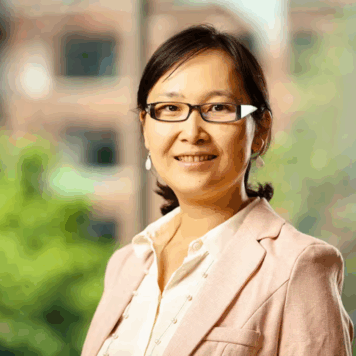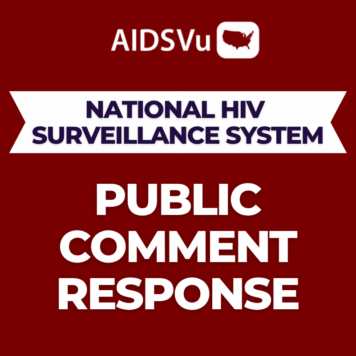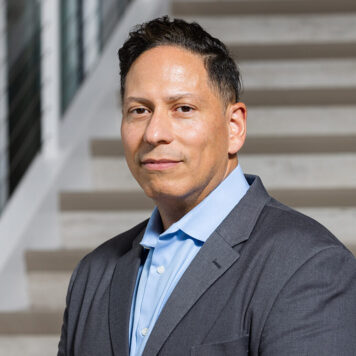Eric C. Wat is the author of Love Your Asian Body: AIDS Activism in Los Angeles, a ‘community memoir of the AIDS movement in Asian American communities.’ The book chronicles AIDS activism in Los Angeles through over 35 activists and survivors. It tells the story of the Asian American community rising up to meet the challenge of the deadly AIDS epidemic.
Q: Two of your books have documented the LGBTQ+ Asian community in Southern California. What drew you to chronicle the experiences of this community in this specific location?
It’s important to highlight that it’s not just the Southern California community but specifically Los Angeles, which is my second home. I was born in Hong Kong, and when my family moved in the early 80s, we settled in a suburb in Los Angeles. I did not love LA right away. It’s very fast. It’s a huge territory, and you can go your entire life without knowing some parts of it. I’m still learning a lot about LA, and I’ve been here most of my life. The way I fell in love with LA had to do with my coming of age – racially, sexually, and politically. The HIV/AIDS movement was a huge part of that because it allowed me to get to know different parts of communities in Los Angeles. People like to think of LA as Hollywood and beaches, and we definitely have those, but we are not also defined by those things. Most of us aren’t, actually. My work is a tribute and my love letter to the complexity of the city. For the LGBTQ+, Asian American community – especially when it comes to the AIDS movement – people tend to think of the epicenters as San Francisco and New York. I really wanted to elevate LA as part of the conversation. So that’s why a lot of my work focuses on LA. I want to use my own personal experiences as a grounding for the history that I write about.
Q: Your most recent book, “Love Your Asian Body: AIDS Activism in Los Angeles,” is based on interviews with over 35 activists and survivors of the AIDS epidemic in Los Angeles. What were common themes in your interviews with these activists and survivors, and how have these themes changed since the beginning of the AIDS epidemic in the 1980s?
This is actually a book that I never thought I would write. I wrote my first book about the LGBTQ+ Asian American community. I decided to stop with that book around the beginning of the AIDS epidemic, because I knew AIDS was going to change everything in that community. I had tried to finish that book and knew that I wouldn’t be able to take on a whole other subject. So, I moved on, and focused on my fiction work. But then, the election of Trump happened in 2016, and it was a really hard time to be an activist, to feel that all of this work that you had done for the past decades had cumulated in this election. I needed to really think about a time when things were also feeling so hopeless, yet joy still carried us through. The AIDS epidemic came to mind. I was born in 1970, so by the time AIDS hit in the early 80s, I was dealing with my own personal sexuality. And when I got involved in my early 20s, it was the 90s. AIDS had become a different animal by then.
In those 10 years, the traditional AIDS narrative tended to have a lot of anger and grief, and I would certainly say there is a lot of anger and grief in the stories that I’ve heard. But I’ve also heard that there’s a lot of joy and hope, too. Because there was so much death, sadness, and grief, the joy is even more important. Without it, you can’t really get through – you can’t do anything. The AIDS epidemic and movement gave me more perspective as we entered the Trump era, and it kept me going during those years. It’s the reason why I worked on this book – the one I thought I would never write, because it was just too complicated. The theme of joy shows through. I see it too in today’s activists – this is really hard work. This is very heartbreaking work as well. But there’s also so much joy. There’s music. There’s dancing. There are creative signs and placards when I attend protests. People are just finding community, and it reminds me of what happened in the 90s and what kept me going in the 90s, which is that I found other people like me. That in itself is a safe sex intervention. I wasn’t isolated, I learned I had options besides unsafe sex and other ways to channel my creativity and my community in ways that are also productive. In a way, it also celebrates sex.
What was really amazing about those activists was that they didn’t shy away from saying ‘Hey, this is what we do. We’re not going to be ashamed of it just because people try to blame us instead of government inaction.’ There’s a self-defiance in being who we are, without hiding any part of ourselves that may be shameful to a lot of people in society. There are perennial themes that I carry with me to this day, in my middle age, to try to be who I am in the face of so much shame and discrimination. That hasn’t really changed. AIDS, as an epidemic, has changed a lot since the 90s. But the theme regarding the movement is that I feel like while there’s much less shame and discrimination, it’s still present in today’s movement and activist world.
Q: A main cause for the establishment and growth of the Asian American LGBTQ+ community was the ‘stigma, fear and hatred in the public’ towards those who were diagnosed with HIV/AIDS, according to Love Your Asian Body. How has this stigma changed over time – and are there next steps to further destigmatize HIV/AIDS diagnoses among the Asian American community?
There’s definitely still stigma. People don’t talk about it as much as we did in the 90s and some of that has to do with advancements in medicine. The stigma has evolved into blaming people for their HIV infections. It’s rooted in the questions of ‘Why didn’t you protect yourself? Why didn’t you take PrEP in this day and age? Why would you still do that?’ People who are newly diagnosed with HIV may feel part of that stigma. The conversation around HIV/AIDS as a whole has changed because of developments in medicine – which is good because people are not dying as much; they are living longer. But it’s changed from a grassroots movement where people were trying to not only address the disease, but also change people’s perspective around those who have stereotypically carried the virus. The virus itself isn’t the only thing that’s different – it’s the whole world. The whole world is a bit different when it comes to LGBTQ+ awareness. The battlefront has changed from specifically HIV/AIDS to arguments around LGBTQ+ youth – specifically the transgender and gender non-conforming population. That’s where the fights are now. The stigma has not gone – rather, it is being used against additional populations.
Q: In 2021, Asian people had the lowest testing rates among all races/ethnicities. Why do you think this pattern persists, despite the movement of activism and support within the community?
This is something we thought about back in the 90s, too. In Love Your Asian Body, there’s a whole section in a chapter devoted to the transmission rate within the Asian American Pacific Islander community. At the beginning of the epidemic, people thought that there was some sort of immunity among Asian Americans, because there weren’t any cases.
But the Asian American community is very complex. Every community is complex, but I think our community is uniquely complex in the way it’s highly influenced by the number of different ethnic groups with very different cultures and experiences within the United States’ history of immigration. We have these ethnic enclaves that could be their own thing. When we were doing activist work in the 90s, we were clear that there isn’t one language that simply covers all the ethnic groups. When we did outreach, or social marketing campaigns, we had to make sure it was linguistically and culturally relevant to the very specific population they were reaching out to. It’s always hard to find data, or get data, especially if you are a new immigrant. It can be so isolating sometimes that you can’t access services or surveys. I think that’s probably still true today – a lot of people are so isolated that either don’t have access or don’t feel comfortable accessing some of these services like testing. Additionally, back in the 90s, there were a lot more resources geared towards Asian Americans around HIV testing.
I feel like we have kind of fallen off as a risk group when it comes to HIV prevention because of the low numbers of documented transmission. I felt that, even though there was a lot of campaigning in the 90s around it, there wasn’t much outreach effort or public funding for that type of outreach effort. The lack of resources may also explain why HIV doesn’t register as an issue for a lot of immigrants. But immigrants were – and are – very hard to reach. I call it the ‘holy grail of outreach.’ It’s very clear that any public message around public education and HIV/AIDS that is put out by mainstream, the government, or mainstream AIDS agencies is not going to carry over to the immigrant community. So, we have to do our own work.
Q: May 19 is National Asian & Pacific Islander HIV/AIDS Awareness Day, dedicated to raising awareness about the impact of HIV/AIDS on Asian and Pacific Islander communities across the United States. What would you like to communicate to the AAPI community who are living with HIV/AIDS or hold stigma towards HIV/AIDS?
A lot of my stories try to de-stigmatize not only people with HIV, but people who are deemed marginalized or deviant by society. I often say that it’s about how people on the margins are the ones who keep pushing the envelopes. We are so necessary in that battlefront against forces that try to homogenize us or try to make us into something that is more palatable to the rest of society. To me, I want to change the narrative from stigma to actually having some power – having some enormous power as people who are living on the margins, holding these truths. Even though I might not be speaking to the mainstream audience, I do want those people, people who are living with HIV, to know that they are actually at the forefront.
A lot of these things have the power to change, and it is really the stories that are needed to change people’s minds about what’s going on. We are very lucky that the advances in medication have led more people to survive. Of course, there are more stories. There are some people that I wish I could have talked to for my book, but unfortunately, they have passed away. And I was very lucky that I was able to talk to many other folks who are still with us today because they are surviving the epidemic. They have survived the epidemic. All of these stories are immensely important.
The other population that I want to speak to are the younger people. We don’t always have access to this history; it’s not always written down. With the LGBTQ+ community, there’s not always communication between the generations. So, unfortunately, these stories don’t get passed down. I don’t want to tell them how to do their work. I don’t want to tell them that the golden age of activism has passed. It’s none of that. There are a lot of tensions and struggles that activists in the 90s must work through. People didn’t know exactly what they were doing – that’s the excitement and innovation involved in it, too. But I think that young people having a sense of history is very foundational to the work that they are carrying on – because it’s hard to do this work. It’s heartbreaking but knowing that you come from a long line of activists and that you’re not alone, I hope, will give them more sense of solidarity and community in doing the work that they’re engaged in now.




